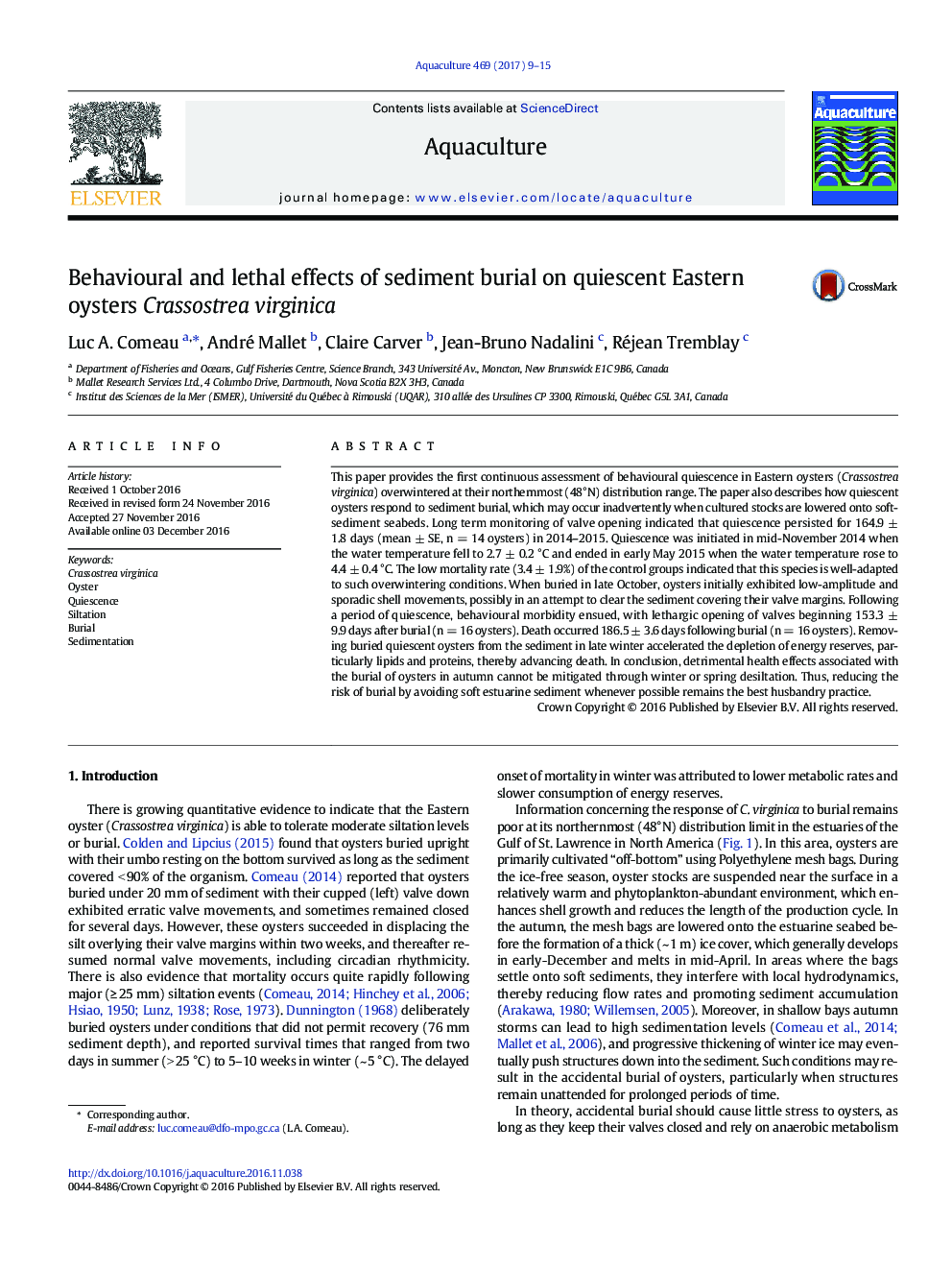| Article ID | Journal | Published Year | Pages | File Type |
|---|---|---|---|---|
| 5539135 | Aquaculture | 2017 | 7 Pages |
Abstract
This paper provides the first continuous assessment of behavioural quiescence in Eastern oysters (Crassostrea virginica) overwintered at their northernmost (48°N) distribution range. The paper also describes how quiescent oysters respond to sediment burial, which may occur inadvertently when cultured stocks are lowered onto soft-sediment seabeds. Long term monitoring of valve opening indicated that quiescence persisted for 164.9 ± 1.8 days (mean ± SE, n = 14 oysters) in 2014-2015. Quiescence was initiated in mid-November 2014 when the water temperature fell to 2.7 ± 0.2 °C and ended in early May 2015 when the water temperature rose to 4.4 ± 0.4 °C. The low mortality rate (3.4 ± 1.9%) of the control groups indicated that this species is well-adapted to such overwintering conditions. When buried in late October, oysters initially exhibited low-amplitude and sporadic shell movements, possibly in an attempt to clear the sediment covering their valve margins. Following a period of quiescence, behavioural morbidity ensued, with lethargic opening of valves beginning 153.3 ± 9.9 days after burial (n = 16 oysters). Death occurred 186.5 ± 3.6 days following burial (n = 16 oysters). Removing buried quiescent oysters from the sediment in late winter accelerated the depletion of energy reserves, particularly lipids and proteins, thereby advancing death. In conclusion, detrimental health effects associated with the burial of oysters in autumn cannot be mitigated through winter or spring desiltation. Thus, reducing the risk of burial by avoiding soft estuarine sediment whenever possible remains the best husbandry practice.
Related Topics
Life Sciences
Agricultural and Biological Sciences
Aquatic Science
Authors
Luc A. Comeau, André Mallet, Claire Carver, Jean-Bruno Nadalini, Réjean Tremblay,
